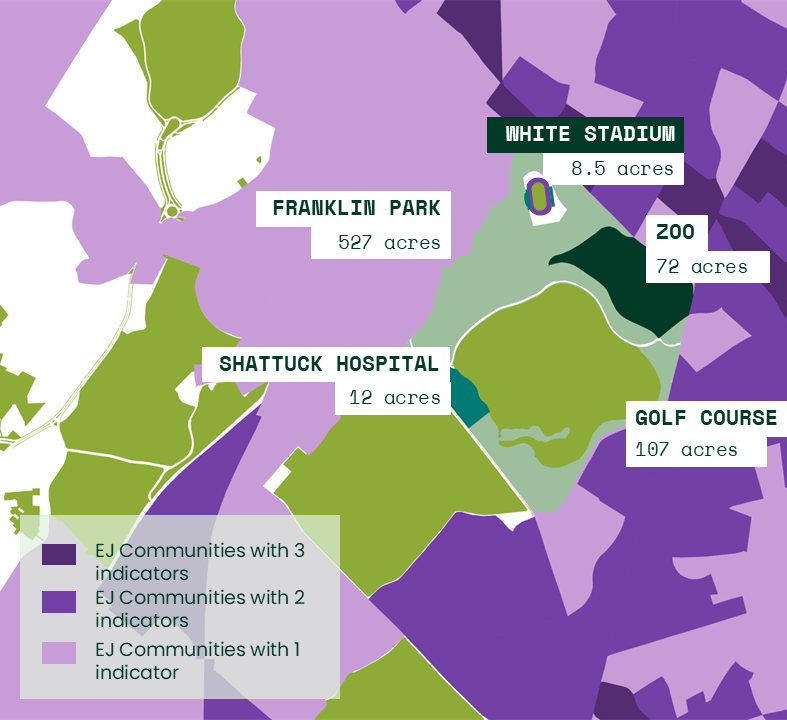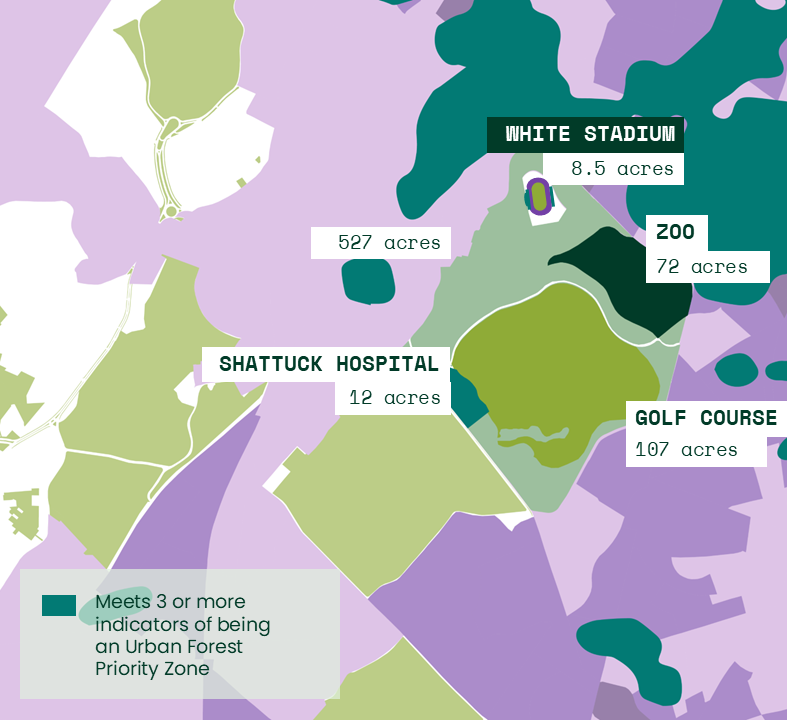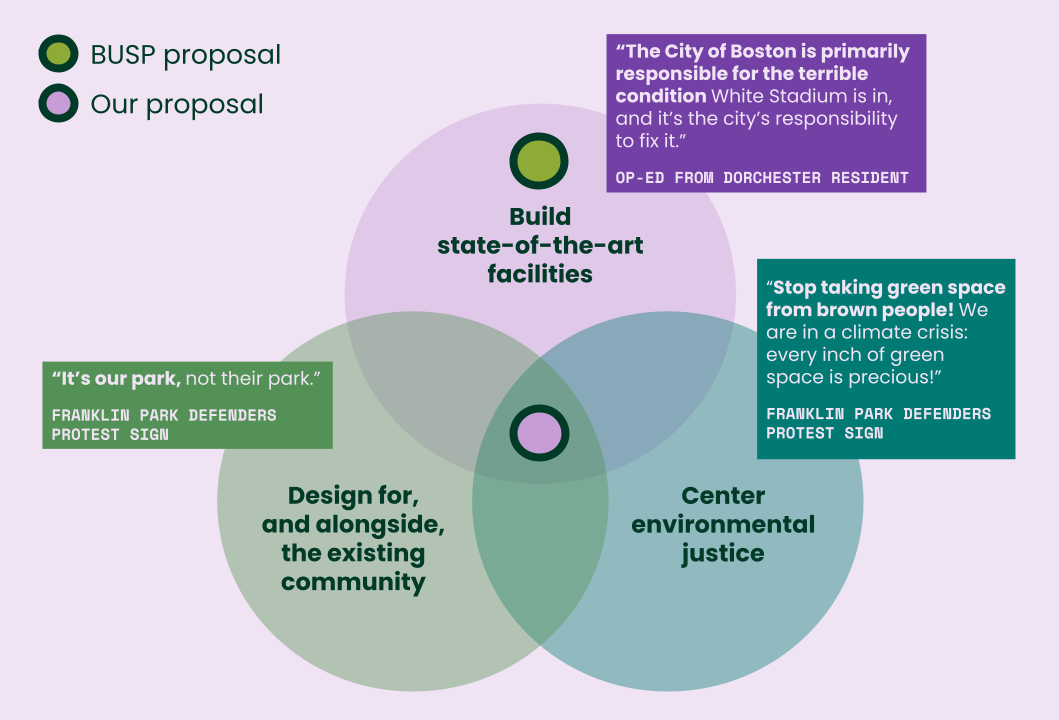Changing the game
A justice-centered, climate resilient White Stadium
Planning studio project in Roxbury, MA
Team members: Hannah Jun & Jason Boyle
From 11/2024 to 12/2024
In 2023, Mayor Michelle Wu announced plans to renovate Boston's White Stadium through a public-private partnership that would see the stadium leased to a new women's soccer team on key weekends. This plan was met with significant pushback from residents who live near the stadium, but the City's plans still moved forward.
Decades of disinvestment from the city, desire from the community to use the space, and speculation from private entities prompts the question: What if there was a proposal to redesign White Stadium that centered community voice and environmental justice? For our planning studio's final project, I worked with my teammates to design this alternative proposal for White Stadium's renovation.
Context
White Stadium is located in Franklin Park, a publicly-owned park in the south of Roxbury, a majority-Black and Latino neighborhood of Boston. The stadium is used by Boston Public Schools athletes from around the city for football games, soccer matches, and track meets.
Franklin Park sits at the center of multiple neighborhoods whose residents meet one or more indicators marking them as environmental justice communities in the State of Massachusetts, making them particularly vulnerable to the effects of climate change. It also serves residents who live in areas identified by the City of Boston as Urban Forest Priority Zones, meaning that the City itself believes that measures to increase tree canopy and biodiversity in those areas should be prioritized.


Maps created with Hannah Jun
As the area surrounding Franklin Park has a number of mature trees with wide, vibrant canopies, Boston Unity Soccer Partners' proposal to cut down over 150 of those trees to expand the stadium goes against principles of environmental justice.
Goal
Create a proposal for a renovation of White Stadium that meets the community needs and is economically viable, as an alternative vision to the Boston Unity Soccer Partners proposal, and present that vision to a group of community stakeholders and organizations to build consensus.
Process
Our team conducted research on the existing conditions of White Stadium, the City’s proposed renovation, and community concerns expressed in public meetings and advocacy efforts. My role included mapping key environmental indicators like Boston’s Urban Forest Priority Zones, to illustrate the significance of Franklin Park’s green space.
Additionally, I conducted background research by combing through city reports, news articles, and public meeting minutes to gather insights on resident concerns. To supplement this research, I contributed to our team’s informal interviews with professionals and advocates involved in local planning and environmental justice work, helping to ensure our proposal was grounded in real-world concerns and constraints.
Through our research, we identified three core community demands: (1) upgrading stadium facilities to meet athletic regulatory standards and student-athlete needs, (2) ensuring that the space remains accessible to and designed for the surrounding community rather than being monetized for private interests, and (3) centering environmental justice by preserving Franklin Park’s tree canopy and enhancing climate resilience.
Out of these demands, we then developed a proposal that integrated community priorities with sustainable design strategies. Our plan included key facility upgrades—such as improved seating, locker rooms, and a sports medicine center—while maintaining public access and incorporating green infrastructure to enhance resilience. We designed our proposal to be economically viable, exploring funding sources that did not rely on privatization.

Outcome
Our proposal provided a community-centered, environmentally responsible alternative to the City's plan, demonstrating that White Stadium’s renovation could be both equitable and financially feasible. While our project was a studio exercise rather than an official policy proposal, it contributed to the broader conversation about public land use, environmental justice, and community-driven planning in Boston. At the end of the semester, we presented this project to the Emerald Necklace Conservancy, a key stakeholder advocating for the community affected by this plan. Our presentation highlighted how our approach met the community’s demands in ways the City's proposal did not, sparking discussion about pathways for further advocacy.
By engaging with stakeholders and developing a well-researched alternative, our work underscored the importance of equity-focused urban planning and reinforced the role of planners in advocating for justice, sustainability, and community land stewardship.
View the full presentation below: